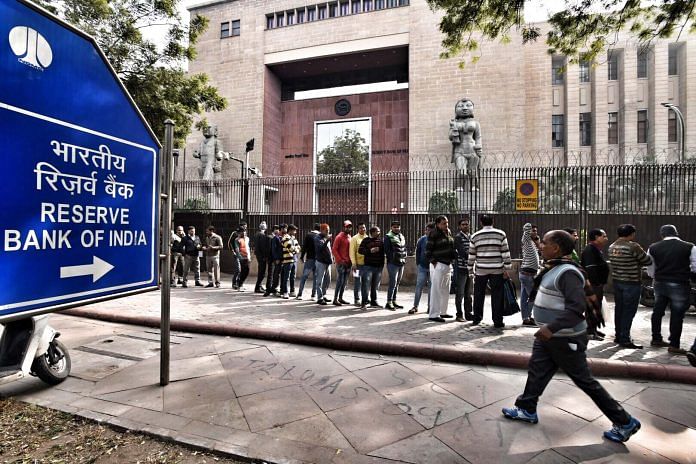After improvement in growth numbers, as well as due to inflationary pressures, The repo rate remains at 6 per cent and the reverse repo rate at 5.75 per cent.
The Reserve Bank of India has decided to keep its policy rates unchanged, despite growing demands from the market, and the government’s recent cuts in GST rates.
In its fifth bi-monthly Monetary Policy Statement (MPS) released Wednesday, the RBI’s Monetary Policy Committee has maintained its consistence neutral stance, in a bid to keep the Consumer Price Index inflation down to its medium-term target of four per cent.
The repo rate – the rate at which the RBI lends to commercial banks – remains at six per cent. The reverse repo rate – the rate at which commercial banks lend to the RBI – is still at 5.75 per cent. The marginal standing facility (MSF) and the bank rate are steady at 6.25 per cent.
The Gross Value Added (GVA) projection for Financial Year 2017-18 has been retained at 6.7 per cent, though the growth in the second quarter was lower than projected in the last bi-monthly resolution released in October. This means the RBI has projected higher GVA growth in the final two quarters of FY18.
The decision to keep the rates unchanged was not a unanimous one, as MPC member Dr Ravindra H. Dholakia voted for a policy rate reduction of 25 basis points.
Here are the highlights of the MPS:
-GVA for Q3 & Q4 is projected at seven and 7.8 per cent respectively, reflecting an upward trend in the economy.
-Inflation forecasts for Q3 & Q4 have gone up to 4.3-4.7 per cent from 4.2-4.6 percent. Retail inflation measured by year-on-year change in Consumer Price Index recorded a seven-month high in October.
-All three sub-sectors of industry have registered a higher growth, and accelerated sharply after sliding for five consecutive quarters.
-Recapitalisation of public sector banks will improve credit growth, and spur consumer demand, financial condition, and overall business situation in Q4 for the services and infrastructure sector.
-Post-GST implementation, improved demand and re-stocking has increased the growth in the manufacturing sector sharply.
-Trajectories that need to be carefully monitored: food and fuel inflation, rising input costs, and factors costing the exchequer – implementation of farm loan waivers, partial roll back on excise duty and VAT, and GST rate cuts that will decrease revenues.
-Merchandise exports have fallen by 1.1 per cent after rising for 14 months consecutively. Sharp fall in exports of gems and jewellery, readymade garments, and drugs and pharmaceuticals has been observed. NET FDI for the first half of 2017-18 has remained the same as 2016-17 for the same period, amidst moderation in September.
-The latest assessment by the World Trade Organisation for Q4 indicates a loss of momentum in global trade due to declining export orders. India’s improvement in the Ease of Doing Business rankings will spur the flow of FDI in the economy.



